Motown
Motown is an American record label owned by Universal Music Group. It was originally founded by Berry Gordy Jr. as Tamla Records on January 12, 1959, and was incorporated as Motown Record Corporation on April 14, 1960. Its name, a portmanteau of motor and town, has become a nickname for Detroit, where the label was originally headquartered.
Motown played an important role in the racial integration of popular music as an African American-owned label that achieved significant crossover success. In the 1960s, Motown and its subsidiary labels (including Tamla Motown, the brand used outside the US) were the most successful proponents of what came to be known as the Motown Sound, a style of soul music with a distinct pop influence. During the 1960s, Motown achieved spectacular success for a small label: 79 records in the top-ten of the Billboard Hot 100 between 1960 and 1969. Following the events of the Detroit Riots of 1967 and the loss of key songwriting/production team Holland-Dozier-Holland the same year over pay disputes, Gordy began relocating Motown to Los Angeles, California. The move was completed in 1972, and Motown later expanded into film and television production, remaining an independent company until 1994, when it was sold to PolyGram before being sold again to MCA Records’ successor Universal Music Group when it acquired PolyGram in 1999.
Motown spent much of the 2000s headquartered in New York City as a part of the UMG subsidiaries Universal Motown and Universal Motown Republic Group. From 2011 to 2014, it was a part of The Island Def Jam Music Group division of Universal Music. In 2014, however, UMG announced the dissolution of Island Def Jam, and Motown relocated back to Los Angeles to operate under the Capitol Music Group, now operating out of the landmark Capitol Tower. In 2018, Motown was inducted into Rhythm & Blues Hall of Fame class at the Charles H. Wright Museum, and Motown legend Martha Reeves received the award for the label.
History
Berry Gordy got his start as a songwriter for local Detroit acts such as Jackie Wilson and the Matadors. Wilson’s single “Lonely Teardrops”, written by Gordy, became a huge success, but Gordy did not feel he made as much money as he deserved from this and other singles he wrote for Wilson. He realized that the more lucrative end of the business was in producing records and owning the publishing.

In 1959, Billy Davis and Berry Gordy’s sisters Gwen and Anna started Anna Records. Davis and Gwen Gordy wanted Berry to be the company president, but Berry wanted to strike out on his own. On January 12, 1959, he started Tamla Records, with an $800 loan from his family and royalties earned writing for Jackie Wilson. Gordy originally wanted to name the label Tammy Records, after the hit song popularized by Debbie Reynolds from the 1957 film Tammy and the Bachelor, in which Reynolds also starred. When he found the name was already in use, Berry decided on Tamla instead. Tamla’s first release, in the Detroit area, was Marv Johnson’s “Come to Me” in 1959 (released on United Artists). Its first hit was Barrett Strong’s “Money (That’s What I Want)” (1959), which made it to number 2 on the Billboard R&B charts (released nationally on Anna Records).

Gordy’s first signed act was the Matadors, who immediately changed their name to the Miracles in order to avoid confusion with the Matadors who recorded for Sue. Their first release, “Got a Job”, was an answer record to the Silhouettes’ “Get a Job” (issued on George Goldner’s End Records). The Miracles’ first, minor hit was their fourth single, 1959’s “Bad Girl”, released in Detroit as the debut record on the Motown imprint, and nationally on the Chess label. (Most early Motown singles were released through other labels, such as End, Fury, Gone and Chess.)
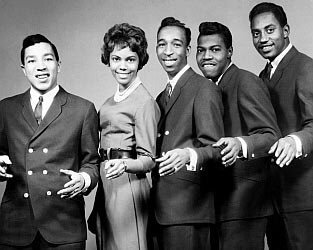 Miracles lead singer William “Smokey” Robinson became the vice president of the company (and later named his daughter “Tamla” and his son “Berry”).
Miracles lead singer William “Smokey” Robinson became the vice president of the company (and later named his daughter “Tamla” and his son “Berry”).
Several of Gordy’s family members, including his father Berry Sr., brothers Robert and George, and sister Esther, were given key roles in the company.
By the middle of the decade, Gwen and Anna Gordy had joined the label in administrative positions as well. Gordy’s partner at the time (and wife from 1960-64), Raynoma Liles, also played a key role in the early days of Motown, leading the company’s first session group, The Rayber Voices, and overseeing the label’s publishing arm, Jobete.
West Grand Boulevard
Also in 1959, Gordy purchased the property that would become Motown’s Hitsville U.S.A. studio. The photography studio located in the back of the property was modified into a small recording studio, and the Gordy’s moved into the second-floor living quarters. Within seven years, Motown would occupy seven additional neighboring houses:
- Hitsville U.S.A., 1959 – (ground floor) administrative office, tape library, control room, Studio A; (upper floor) Gordy living quarters (1959–62), artists and repertoire (1962–72)
- Jobete Publishing office, 1961 – sales, billing, collections, shipping, and public relations
- Berry Gordy Jr. Enterprise, 1962 – offices for Berry Gordy Jr. and Esther Gordy Edwards
- Finance department, 1965 – royalties and payroll
- Artist personal development, 1966 – Harvey Fuqua (head of artist development and producer of stage performances), Maxine Powell (instructor in grooming, poise, and social graces for Motown artists), Maurice King (vocal coach, musical director and arranger), Cholly Atkins (house choreography), and rehearsal studios
- Two houses for administrative offices, 1966 – sales and marketing, traveling and traffic, and mixing and mastering
- ITMI (International Talent Management Inc.) office, 1966 – management
Motown had hired over 450 employees and had a gross income of $20 million by the end of 1966.
Detroit: 1959–1972
Early Tamla/Motown artists included Mable John, Eddie Holland and Mary Wells. “Shop Around”, the Miracles’ first number 1 R&B hit, peaked at number two on the Billboard Hot 100 in 1960. It was Tamla’s first million-selling record. On April 14, 1960, Motown and Tamla Records merged into a new company called Motown Record Corporation. A year later, the Marvelettes scored Tamla’s first US number-one pop hit, “Please Mr. Postman”. By the mid-1960s, the company, with the help of songwriters and producers such as Robinson, A&R chief William “Mickey” Stevenson, Brian Holland, Lamont Dozier, and Norman Whitfield, had become a major force in the music industry.

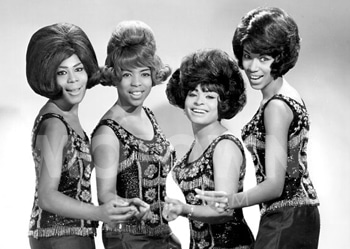
From 1961 to 1971, Motown had 110 top 10 hits. Top artists on the Motown label during that period included the Supremes (initially including Diana Ross), the Four Tops, and the Jackson 5, while Stevie Wonder, Marvin Gaye, the Marvelettes, and the Miracles had hits on the Tamla label.
The company operated several labels in addition to the Tamla and Motown imprints. A third label, which Gordy named after himself (though it was originally called “Miracle”) featured the Temptations, the Contours, and Martha and the Vandellas. A fourth, V.I.P., released recordings by the Velvelettes, the Spinners, the Monitors, and Chris Clark.
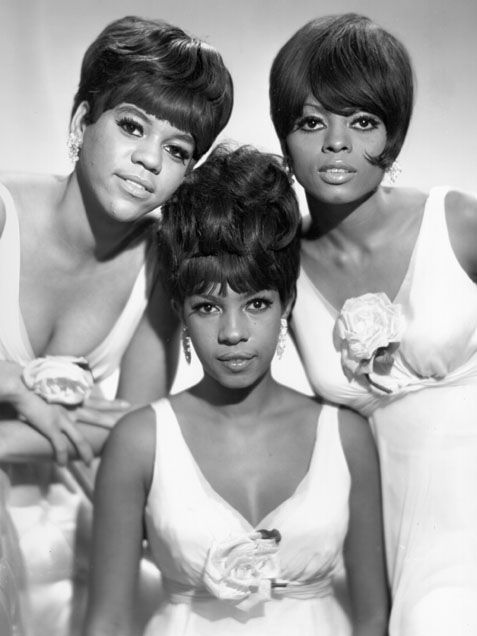
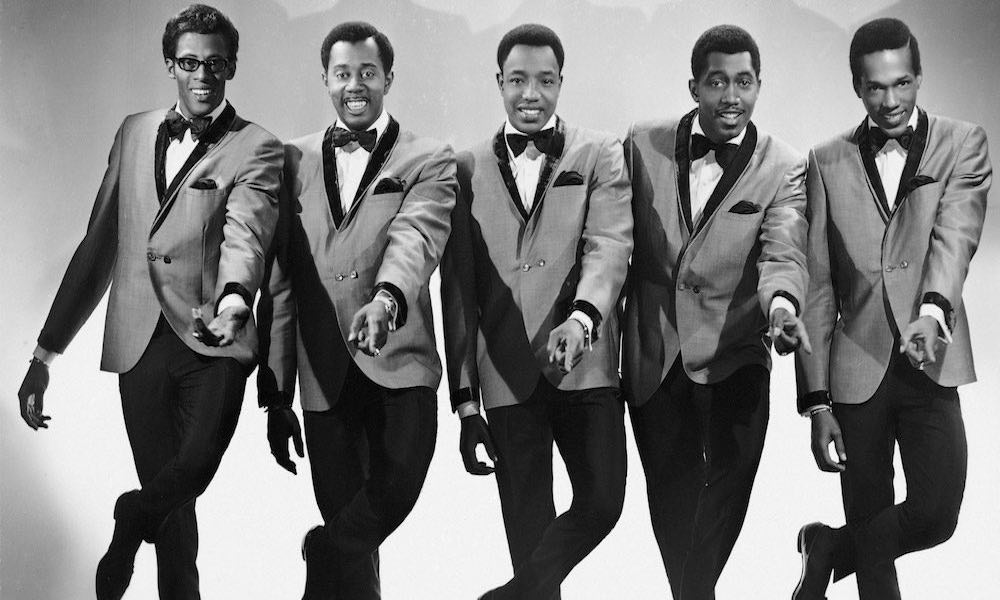

A fifth label, Soul, featured Jr. Walker & the All Stars, Jimmy Ruffin, Shorty Long, the Originals, and Gladys Knight & the Pips (who had found success before joining Motown, as “The Pips” on Vee-Jay). Many more Motown-owned labels released recordings in other genres, including Workshop Jazz (jazz) Earl Washington Reflections and Earl Washington’s All Stars, Mel-o-dy (country, although it was originally an R&B label), and Rare Earth (rock), which featured the band Rare Earth themselves. Under the slogan “The Sound of Young America”, Motown’s acts were enjoying widespread popularity among black and white audiences alike.
Los Angeles: 1972–1998
 After the songwriting trio Holland–Dozier–Holland left the label in 1967 over royalty-payment disputes, Norman Whitfield became the company’s top producer, turning out hits for The Temptations, Marvin Gaye, Gladys Knight & the Pips and Rare Earth.
After the songwriting trio Holland–Dozier–Holland left the label in 1967 over royalty-payment disputes, Norman Whitfield became the company’s top producer, turning out hits for The Temptations, Marvin Gaye, Gladys Knight & the Pips and Rare Earth.
In the meantime Berry Gordy established Motown Productions, a television subsidiary which produced TV specials for the Motown artists, including TCB, with Diana Ross & the Supremes and the Temptations, Diana! with Diana Ross, and Goin’ Back to Indiana with the Jackson 5. The company loosened its production rules, allowing some of its longtime artists the opportunity to write and produce more of their own material. This resulted in the recordings of successful and critically acclaimed albums such as Marvin Gaye’s What’s Going On (1971) and Let’s Get it On (1973), and Stevie Wonder’s Music of My Mind (1972), Talking Book (1972), and Innervisions (1973).
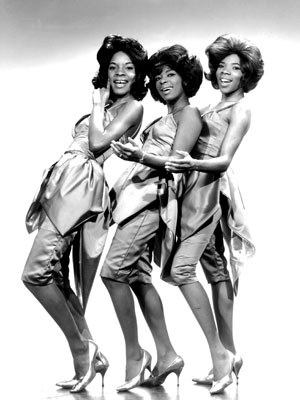 Motown had established branch offices in both New York City and Los Angeles during the mid-1960s, and by 1969 had begun gradually moving more of its operations to Los Angeles. The company moved all of its operations to Los Angeles in June 1972, with a number of artists, among them Martha Reeves, the Four Tops, Gladys Knight & the Pips, and Motown’s Funk Brothers studio band, either staying behind in Detroit or leaving the company for other reasons.
Motown had established branch offices in both New York City and Los Angeles during the mid-1960s, and by 1969 had begun gradually moving more of its operations to Los Angeles. The company moved all of its operations to Los Angeles in June 1972, with a number of artists, among them Martha Reeves, the Four Tops, Gladys Knight & the Pips, and Motown’s Funk Brothers studio band, either staying behind in Detroit or leaving the company for other reasons.
By re-locating, Motown aimed chiefly to branch out into the motion-picture industry, and Motown Productions got its start in film by turning out two hit-vehicles for Diana Ross: the Billie Holiday biographical film Lady Sings the Blues (1972), and Mahogany (1975).
Other Motown films would include Scott Joplin (1977), Thank God It’s Friday (1978), The Wiz (1978) and The Last Dragon (1985). Ewart Abner, who had been associated with Motown since the 1960s, became its president in 1973.
Motown Sound
Motown specialized in a type of soul music it referred to with the trademark “The Motown Sound”. Crafted with an ear towards pop appeal, the Motown Sound typically used tambourines to accent the back beat, prominent and often melodic electric bass-guitar lines, distinctive melodic and chord structures, and a call-and-response singing style that originated in gospel music. In 1971, Jon Landau wrote in Rolling Stone that the sound consisted of songs with simple structures but sophisticated melodies, along with a four-beat drum pattern, regular use of horns and strings and “a trebly style of mixing that relied heavily on electronic limiting and equalizing (boosting the high range frequencies) to give the overall product a distinctive sound, particularly effective for broadcast over AM radio”. Pop production techniques such as the use of orchestral string sections, charted horn sections, and carefully arranged background vocals were also used. Complex arrangements and elaborate, melismatic vocal riffs were avoided. Motown producers believed steadfastly in the “KISS principle”. Despite the growth of popular music being written and performed by black artists, the songs would not become popular or recognized unless the music was being performed by white performers. However, the Motown Sound became distinctly unique. The “real” Motown Sound became more favorable than the altered renditions.
The Motown production process has been described as factory-like. The Hitsville studios remained open and active 22 hours a day, and artists would often go on tour for weeks, come back to Detroit to record as many songs as possible, and then promptly go on tour again. Berry Gordy held quality control meetings every Friday morning, and used veto power to ensure that only the very best material and performances would be released. The test was that every new release needed to fit into a sequence of the top five selling pop singles of the week. Several tracks that later became critical and commercial favorites were initially rejected by Gordy; the two most notable being the Marvin Gaye songs “I Heard It Through the Grapevine” and “What’s Going On”. In several cases, producers would re-work tracks in hopes of eventually getting them approved at a later Friday morning meeting, as producer Norman Whitfield did with “I Heard It Through the Grapevine” and The Temptations’ “Ain’t Too Proud to Beg”.
Many of Motown’s best-known songs, including all the early hits for the Supremes, were written by the songwriting trio of Holland–Dozier–Holland (Lamont Dozier and brothers Brian and Eddie Holland). Other important Motown producers and songwriters included Norman Whitfield, William “Mickey” Stevenson, Smokey Robinson, Barrett Strong, Nickolas Ashford & Valerie Simpson, Frank Wilson, Pamela Sawyer & Gloria Jones, James Dean & William Weatherspoon, Johnny Bristol, Harvey Fuqua, Gil Askey,[21] Stevie Wonder, and Gordy himself.
